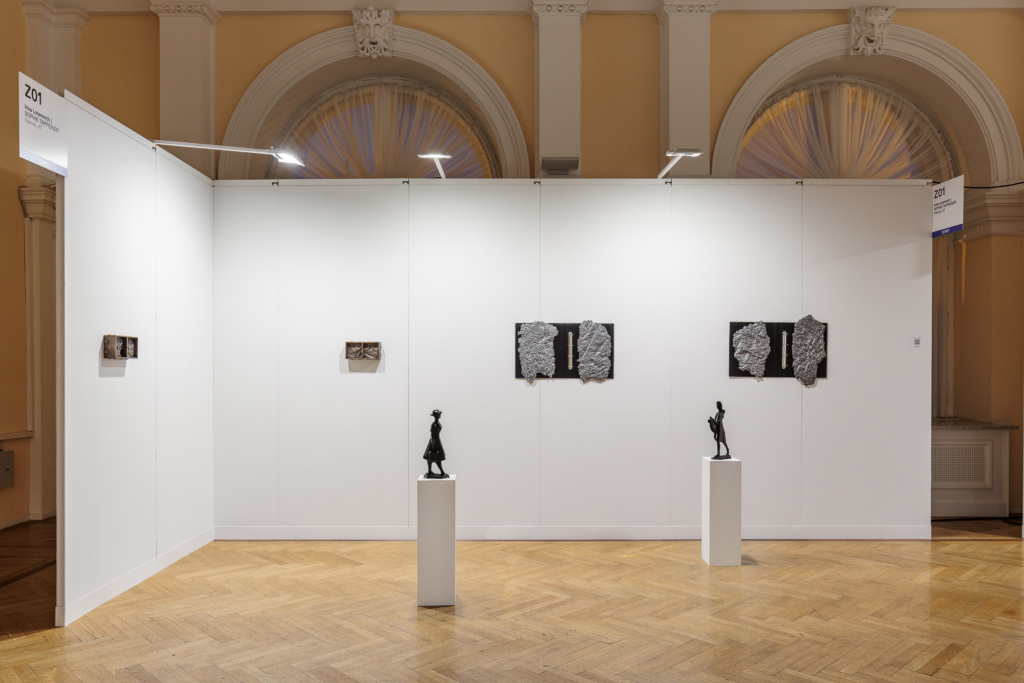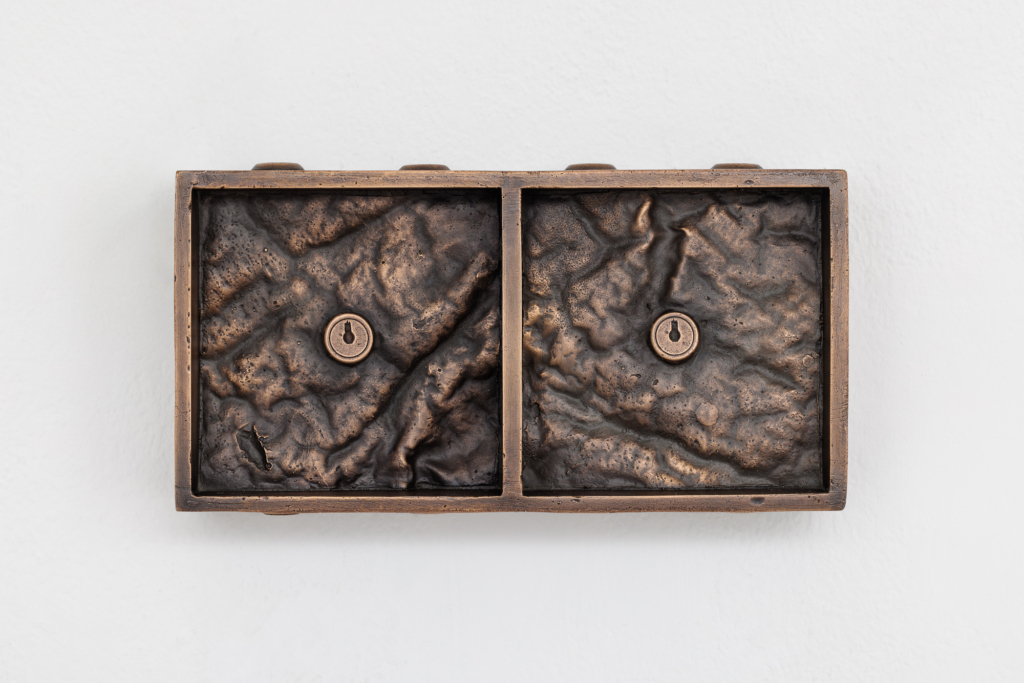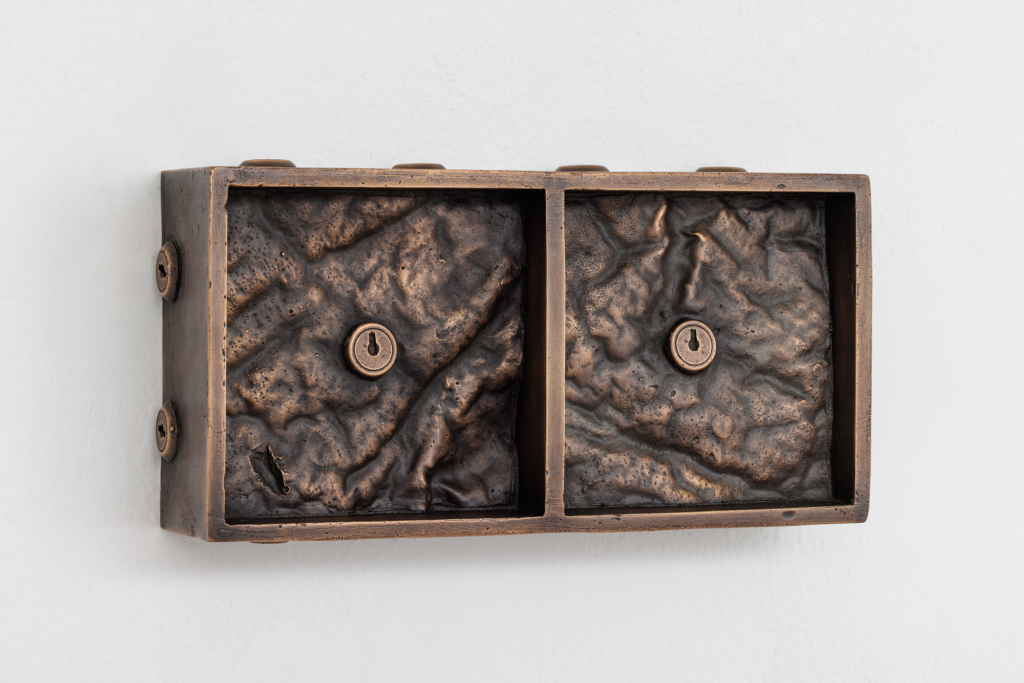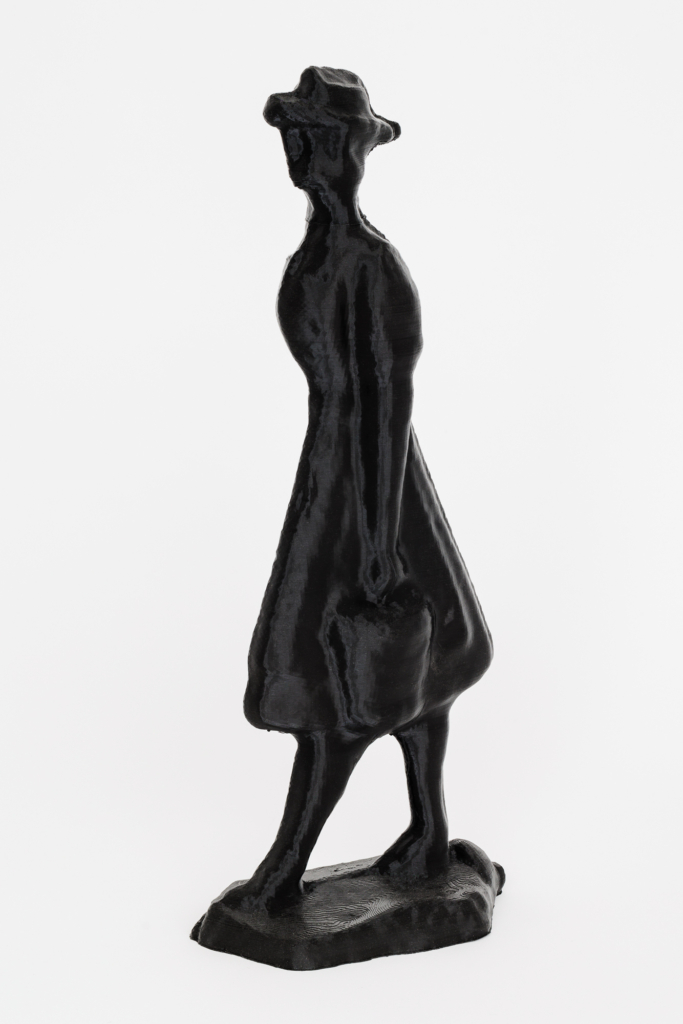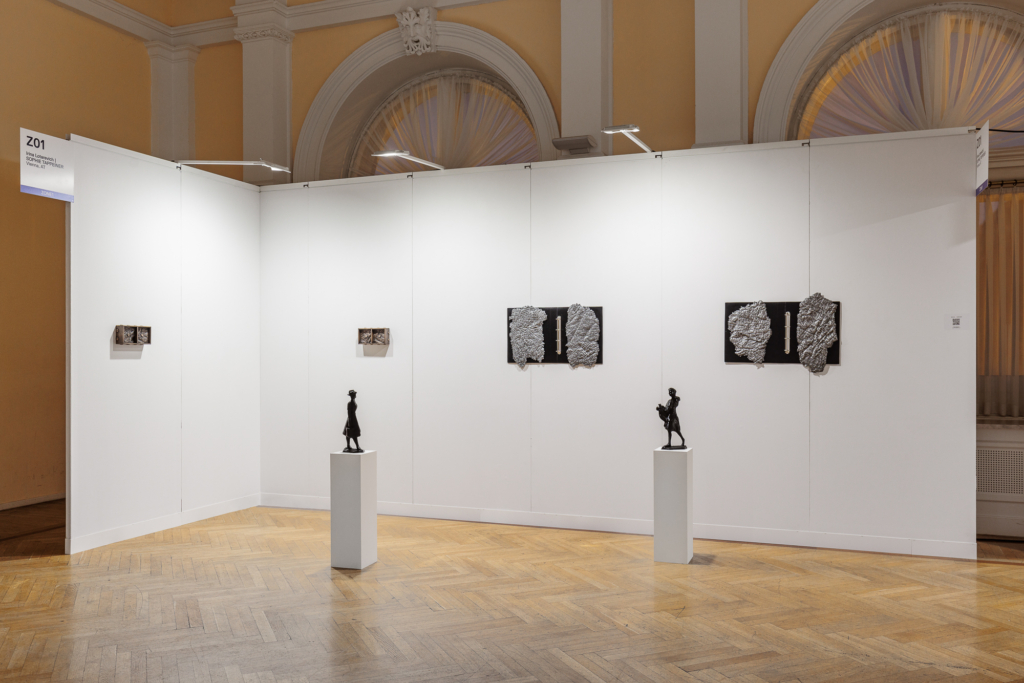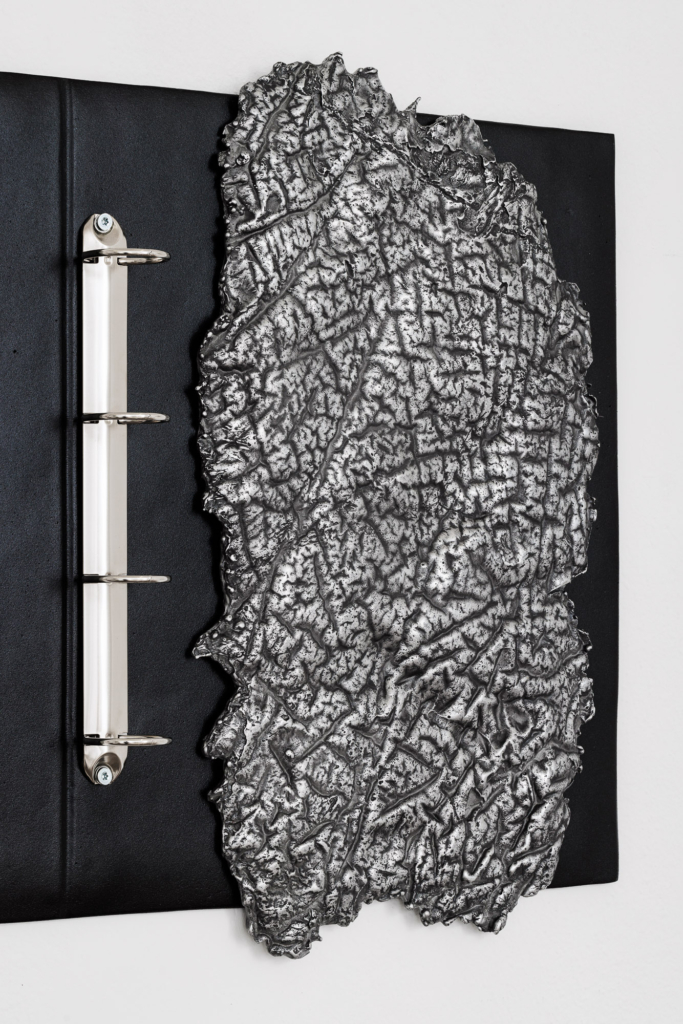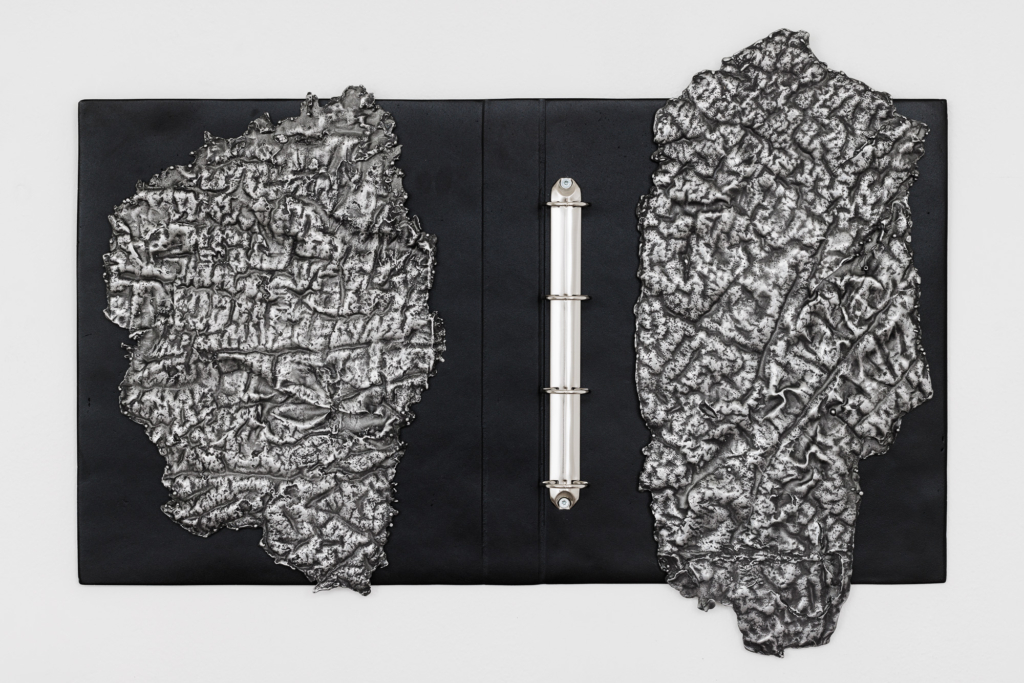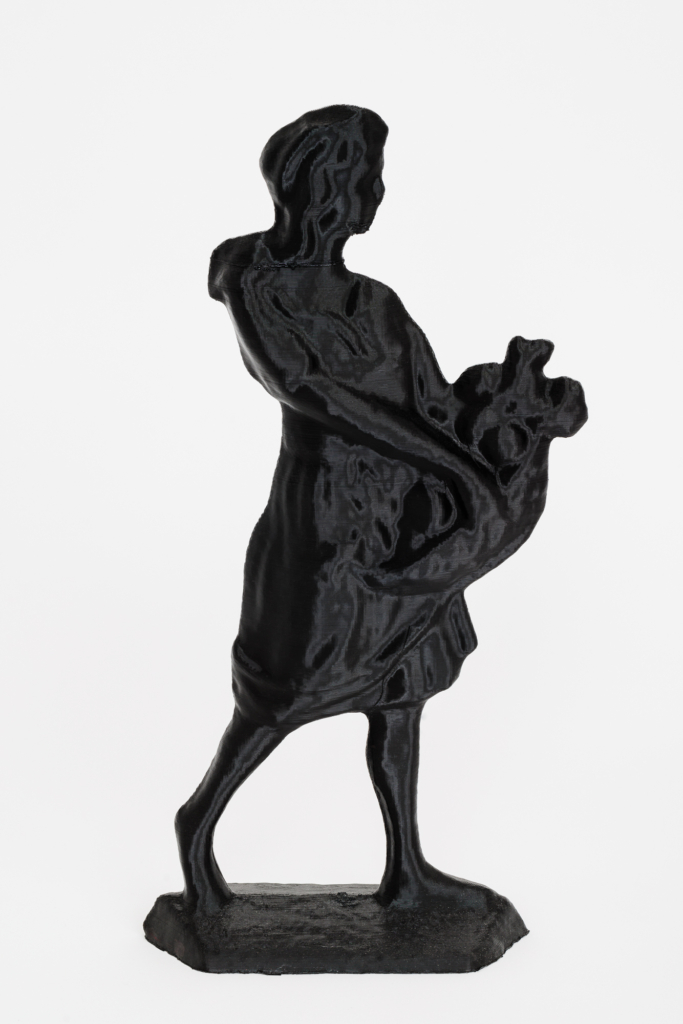Irina Lotarevich’s presentation explores the theme of doubles. This idea of doubles presents itself both within the borders of the works themselves, which are often symmetrically divided in two halves, and by the number of works: all the pieces are represented with two of each kind. For the artist, this doubling has several analogies: it alludes to the doubling inside the body (the stereotype of the left brain/right brain, the symmetry of bodies and organs), as well as to the contrast of our inner life versus our external self-presentation and perception by others.
Lockbox 1 and 2 (2023) take the motif of locks encased in rectilinear compartments, as used previously by the artist in her Housing Anxiety series. Here, the rectilinear structures are merged with an undulating, textured surface, the shape of which was achieved by enlarging casts of the artist’s skin from the area of the palm of her hand. The resulting texture feels bodily and fleshy, yet is ambiguously abstract. The dimensions of the rectangular form suggest something like an interface, a tablet, or a game controller. The work is a mysterious and locked surface, a fleshy structure which presents the puzzle of how to open it. The pieces were made using the lost wax casting process, which allowed the possibility to join varying forms and textures into one solid, unified surface of metal. The cast bronze was patinated with a silver patina, which gives the normally yellow-tinted bronze a slightly cooler gray tone and is frequently used in architectural metalwork.
The cast aluminium wall sculptures Binder with Skins 1 and 2 (2023) feature large, detailed swaths of the same skin texture as used in Lockbox 1 and 2. Here they are used as papers or leaves which are displayed in a large open binder, the kind that would be typically used for documents. The flat surface of the binder is also cast in aluminium and powder-coated to mimic the look and feel of a real binder. The presentation of these “skins” within this particular display device alludes to the storage of biographical documents and information, and the administrative and bureaucratic processes that shape and contain individual lives and destinies. As a child, Lotarevich immigrated with her family from Russia to the United States. One of the most important objects in the new household was a binder stuffed with documents and paperwork, precious evidence required for the immigration process. Now living in Austria, the artist undergoes a similar document collection and storage process today.
Carrying Figure 1 and 2 (2023) are 3D-scanned and printed enlargements of tin figures which were previously used as a sculptural motif by the artist in her 2020 solo exhibition, Refinery (specifically, in the works The Tower, Refinery, and Monument and Values). The original figures were only 4 and 6 centimeters high. By scanning, enlarging, and equalizing the height of these figures, the artist reconfigures the scale of the work and opens up new possibilities for how these archetypes can be modeled in future works. Lotarevich views these figures as a representation of herself as a sculptor: they are female-coded, and carry various loads – a bucket, a basket of fruit or grain – that correlate to the activity of gathering, carrying, and depositing objects, a constant part of the artist’s sculptural process.
PRESS
